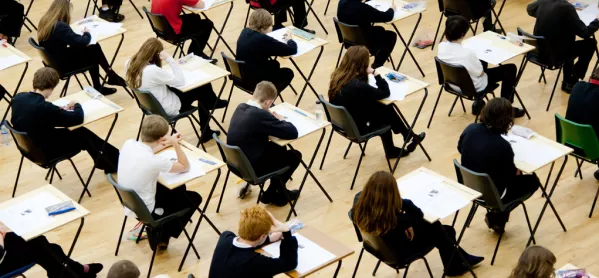Art history’s demise has provoked criticism from devotees of the subject. It has also been accurately observed that art history attracts very few candidates, most of whom come from private schools.
Looked at differently, the loss of subjects like art history sheds light on the way that education is effectively bent out of shape by the exigencies of assessment.
Some have argued that the loss of art history, archaeology et al constitutes a narrowing of the curriculum, but it’s difficult to see how that can be true.
Fewer than a thousand students took A-level art history last summer. Those students would presumably have spent up to a third of their study time on it. Isn’t this the definition of narrowing? The vast majority of students, on the other hand, would have had no examinable engagement with the subject.
Are history of art advocates happy with the status quo? The way the curriculum is constructed and constrained by A level means that invidious choices have to be made. From the perspective of any particular subject, it comes down to choosing either no cake at all, or a diet that consists largely of cake - neither is a healthy option as students of A-level food and nutrition could tell you if it wasn’t also facing extinction.
Good schools try to ensure that all students are exposed to subjects (like art history) that enrich and challenge them. But why do they have to do much of this under the radar, squeezed into the (essentially un-funded) gaps left by an overweening exam framework?
Some see the loss of art history, archaeology and others as representing the erosion of humanities in the curriculum. This is true, up to a point, although the biggest problem remains at key stage 4, where humanities subjects cling to the margins.
Fragmentation hurts the humanities. The natural sciences hang together intellectually; Stem (science, technology, engineering and maths) has a meaning. But “humanities” is just a loose collection of subjects whose exam specifications do not speak to each other.
Even worse, they are thrown into competition with each other for a precious place in a student’s portfolio, even at GCSE. It is difficult to prioritise the history of art when even the study of history itself is merely optional post-14.
Angst over art history arises because the 16-19 curriculum is controlled by A-level specifications of a size that makes doing more than three or four of them problematic. And there is a knock-on effect: the enforced narrowing post-16 only goes to underwrite the impossibility of doing anything sensible about GCSE - students need to have some sort of qualification in the subjects they drop at 16.
Should we insist that a tiny minority of students be allowed to study art history in depth pre-university? Or rather, should we wonder why all students aren’t studying it - and other subjects - as part of a respected and resourced core around which rather slimmer subject specialisms might be built?
Dr Kevin Stannard is the director of innovation and learning at the Girls’ Day School Trust. He tweets as @KevinStannard1




